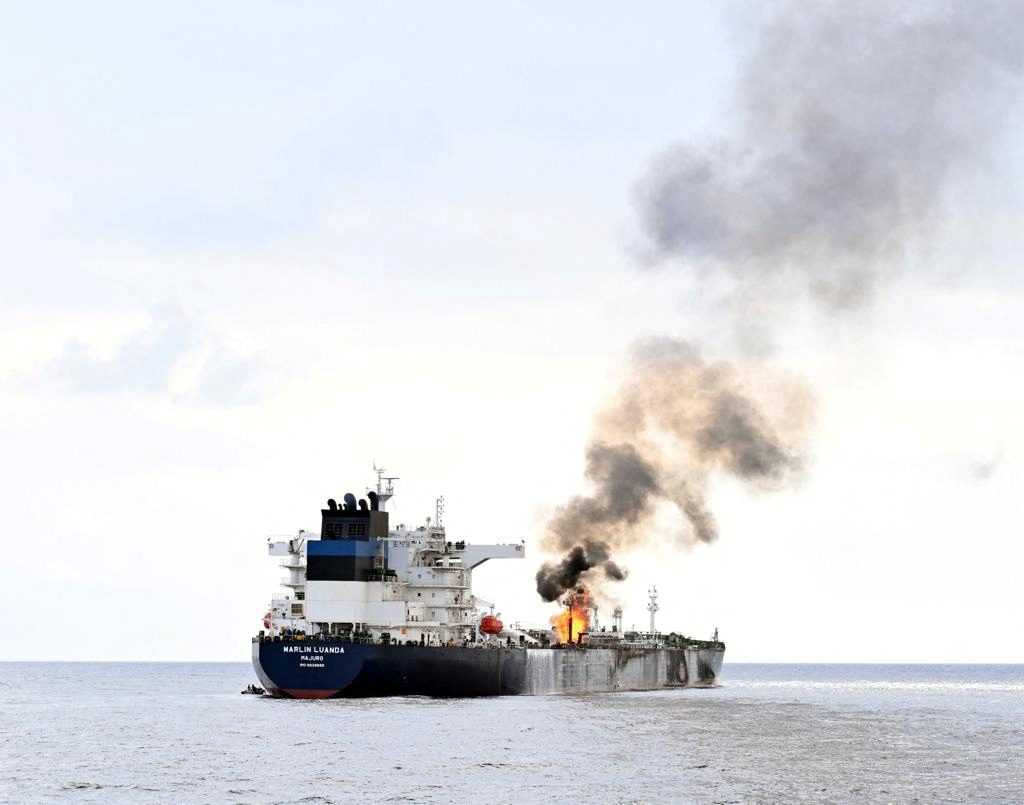Front Circassia, image courtesy Frontline Tankers
(Bloomberg) — A glut of oil tankers competing to haul 2 million-barrel cargoes of crude from ports in the Persian Gulf is set to stay at the highest level since 2009 amid weaker demand for the ships, a Bloomberg News survey showed.
There are 20 percent more very large crude carriers seeking charters over the next 30 days than probable cargoes from the world’s largest loading region, according to the median in a Bloomberg survey of seven shipbrokers and owners today. That’s two percentage points fewer than last week and the largest surplus for this time of year since 2009.
Daily earnings for VLCCs globally slumped 66 percent from the start of the year to $10,031, according to Clarkson Plc, the world’s largest shipbroker. That’s less than half the $24,200 needed by Frontline Ltd., the tanker operator led by billionaire John Fredriksen, for the vessels to break even. Charter costs to haul Middle East oil to Asia reached a 10-week low today, according to the London-based Baltic Exchange.
“Slow activity results in slipping VLCC rates,” Oslo- based investment bank RS Platou Markets AS said in a report. “Brokers reported very few fixtures and longer tonnage lists.”
The surplus of VLCCs seeking charters in the gulf averaged 21 percent during the first quarter, also the highest since 2009, according to Bloomberg surveys.
17% Decline
Hire rates slid for an 11th session in a row to 30.75 industry-standard Worldscale points, the lowest level since Jan. 29, figures from the exchange showed today. Costs have dropped 17 percent since March 21, the last time they rose.
Daily losses for VLCCs on the benchmark Saudi Arabia-to-Japan voyage widened to $4,632 from $3,534 yesterday, according to the exchange. The ships lost money on the route for seven weeks through March 14, according to its assessments, which don’t reflect speed cuts on return journeys after unloading of cargoes aimed at reducing fuel costs.
Marine fuel, or bunkers, ship owners’ main expense, rose 0.1 percent to $613.84 a metric ton after four sessions of declines, according to figures compiled by Bloomberg from 25 ports worldwide.
The Worldscale system is a method for pricing oil cargoes on thousands of trade routes. Each individual voyage’s flat rate, expressed in dollars a ton, is set once a year. Today’s level means hire costs on the benchmark route are 30.75 percent of the nominal Worldscale rate for that voyage.
The Baltic Dirty Tanker Index, a broader measure of oil- shipping costs that includes vessels smaller than VLCCs, slipped 0.4 percent to 709, according to the exchange. The gauge jumped the most since December 2011 in the prior four sessions, according to figures compiled by Bloomberg.
– Rob Sheridan, Copyright 2013 Bloomberg.
Unlock Exclusive Insights Today!
Join the gCaptain Club for curated content, insider opinions, and vibrant community discussions.

 Join The Club
Join The Club













